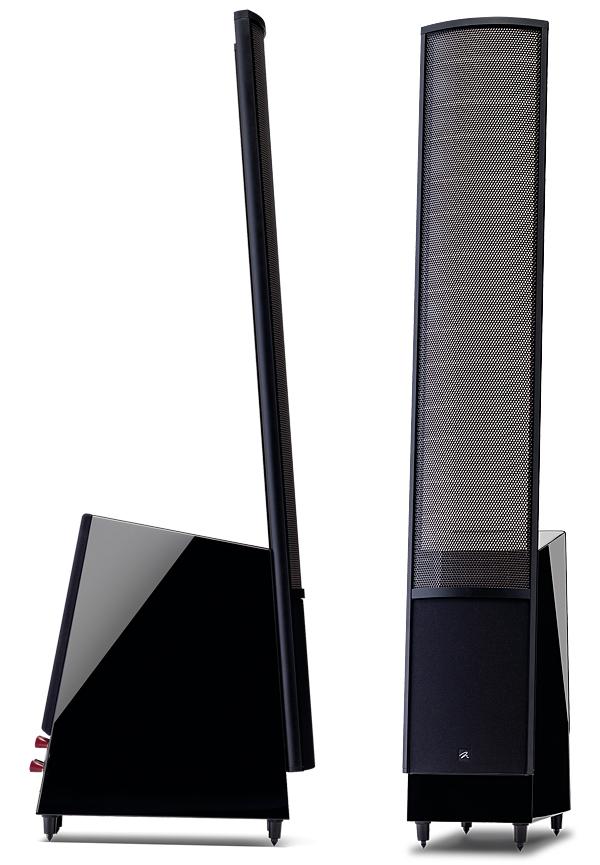MartinLogan ElectroMotion ESL X Loudspeaker

 Flagship of the ElectroMotion series, this hybrid electrostatic promises a taste of the range-topping Masterpiece loudspeakers at a more wallet-friendly price
Flagship of the ElectroMotion series, this hybrid electrostatic promises a taste of the range-topping Masterpiece loudspeakers at a more wallet-friendly price
The hi-fi market is replete with loudspeakers that look a little 'different', but few are as eye-catching as an electrostatic design where music appears to be coming almost from thin air. MartinLogan, the Kansas-based company established in the early 1980s, is one of the technology's best-known advocates. It began life with a 'static model, and even though its range has expanded since into conventional box-type speaker territory, its mantra remains 'wherever possible, we go electrostatic'.
With the ElectroMotion series, it also 'goes' affordable. The EM-ESL X tested here sells for £4995 (there's also the option of the smaller £3495 EM-ESL) and when compared to the company's Masterpiece stable, where pricing extends from the £7995 Classic ESL to the £90,000 Neolith [HFN Jul '16], this seems something of a bargain.
That impression doesn't wane when you lay eyes on it. A floorstanding model standing 1.5m on pre-fitted feet, the EM-ESL X will likely tower over your listening seat – although maybe 'over' isn't the right word, as the XStat panel, a 12-micron-thick film diaphragm sandwiched between two perforated steel stators, leans back slightly. This rake is intended to channel the speaker's limited vertical dispersion, targeting energy at the listening position and reducing off-floor reflections.
You've Been Framed
MartinLogan's XStat panel is curved, an engineering tweak the manufacturer says enables an optimal 30° horizontal dispersion. It's then housed in an aluminium composite AirFrame enclosure that maintains panel rigidity, while maximising 'playable surface area'. This enclosure joins to the speaker's lower cabinet, which has a front baffle that continues the angle of the electrostatic transducer, and a rear that angles the opposite way. The result is an unusual overall aesthetic – I rather like it, even though the EM-ESL X's front and rear grilles aren't a great match for the cabinet's gloss black finish.

Shining A Light
Behind these grilles are 200mm woofers, completing the speaker's hybrid design. In this case the bass section is passive, whereas most of the pricier Masterpiece models incorporate Class D amplifiers in fully active bass solutions.
Meanwhile, the standard ElectroMotion ESL has a single front-facing driver while the EM-ESL X we have here has another 200mm unit mounted to the rear. So while you can think of this model's 'X' suffix as signifying 'extra-large' – the panel has 50in2 of extra surface area over the step-down EM-ESL, by virtue of being 16cm taller – it could also stand for extra bass.
However, this second woofer doesn't result in a radical change to the claimed bass extension as the EM-ESL X's 41Hz (–3dB) is just one Hz deeper than the ESL's 42Hz.
Some speakers are more obliging when it comes to placement than others, and the EM-ESL X fits into your room begrudgingly. It's not only very tall but, as a dipole speaker, boundary wall proximity needs to be managed. The recommendation is a minimum 61cm, as outlined in the in-depth installation manual (where the use of a torch – to reflect off the inner third of the curved panel – is even recommended to help toe-in the cabinets).
MartinLogan suggests that side walls should be less of a concern, thanks to the EM-ESL X's low, phase-cancelled, horizontal output, but the gist is that this is a speaker that benefits from plenty of space. And that includes a distance to the listening position in excess of the width between the pair – and plenty of experimentation.

















































